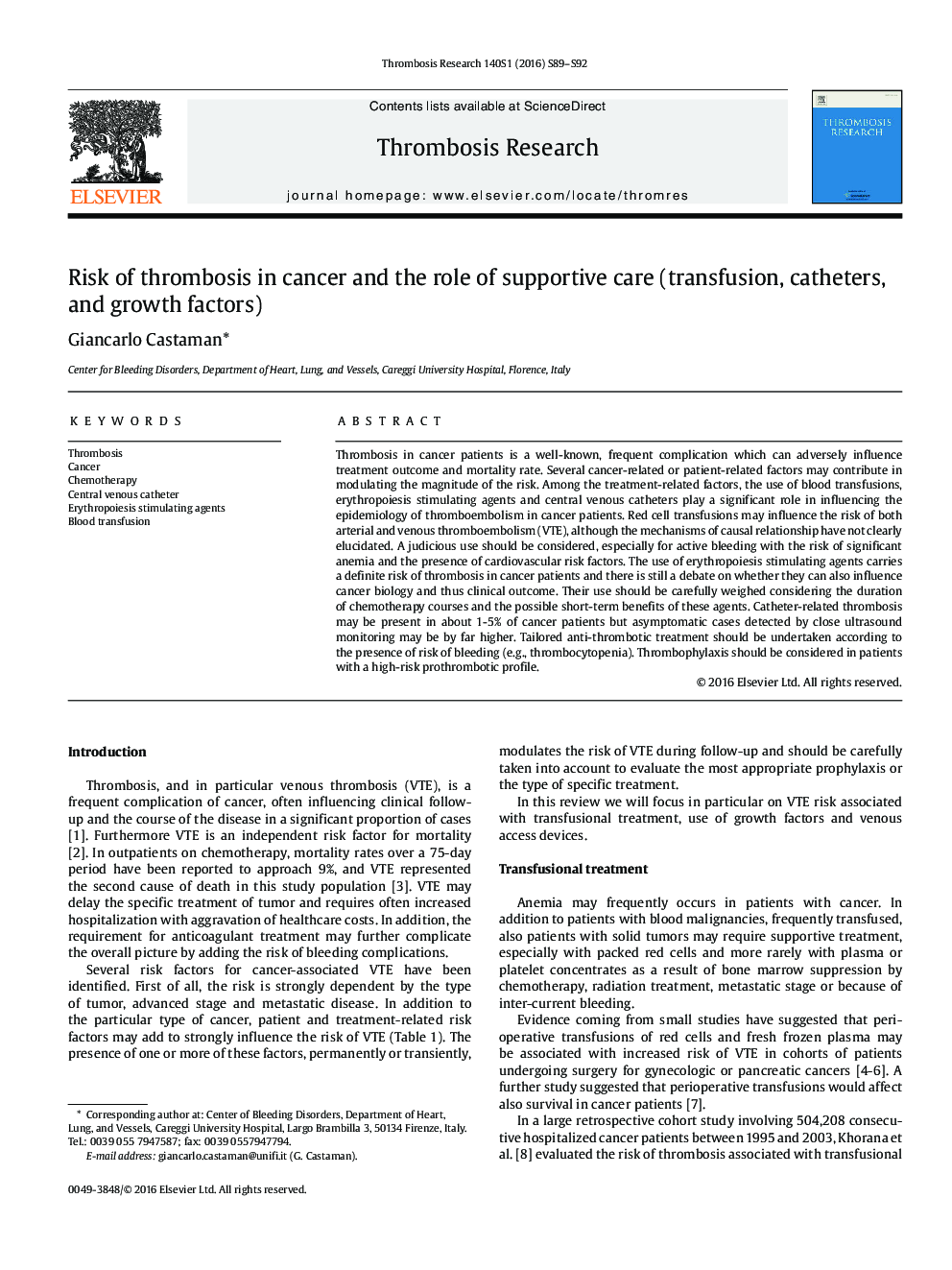| کد مقاله | کد نشریه | سال انتشار | مقاله انگلیسی | نسخه تمام متن |
|---|---|---|---|---|
| 3026940 | 1182933 | 2016 | 4 صفحه PDF | دانلود رایگان |
• Blood transfusion confers a slight increase of venous and arterial thrombosis in cancer patients
• Erythropoiesis stimulating agents increase the risk of venous thromboembolism in cancer patients
• Symptomatic central catheter-associated venous thrombosis occurs in 1-5 % of cancer patients
ABSTRACTThrombosis in cancer patients is a well-known, frequent complication which can adversely influence treatment outcome and mortality rate. Several cancer-related or patient-related factors may contribute in modulating the magnitude of the risk. Among the treatment-related factors, the use of blood transfusions, erythropoiesis stimulating agents and central venous catheters play a significant role in influencing the epidemiology of thromboembolism in cancer patients. Red cell transfusions may influence the risk of both arterial and venous thromboembolism (VTE), although the mechanisms of causal relationship have not clearly elucidated. A judicious use should be considered, especially for active bleeding with the risk of significant anemia and the presence of cardiovascular risk factors. The use of erythropoiesis stimulating agents carries a definite risk of thrombosis in cancer patients and there is still a debate on whether they can also influence cancer biology and thus clinical outcome. Their use should be carefully weighed considering the duration of chemotherapy courses and the possible short-term benefits of these agents. Catheter-related thrombosis may be present in about 1-5% of cancer patients but asymptomatic cases detected by close ultrasound monitoring may be by far higher. Tailored anti-thrombotic treatment should be undertaken according to the presence of risk of bleeding (e.g., thrombocytopenia). Thrombophylaxis should be considered in patients with a high-risk prothrombotic profile.
Journal: Thrombosis Research - Volume 140, Supplement 1, April 2016, Pages S89-S92
